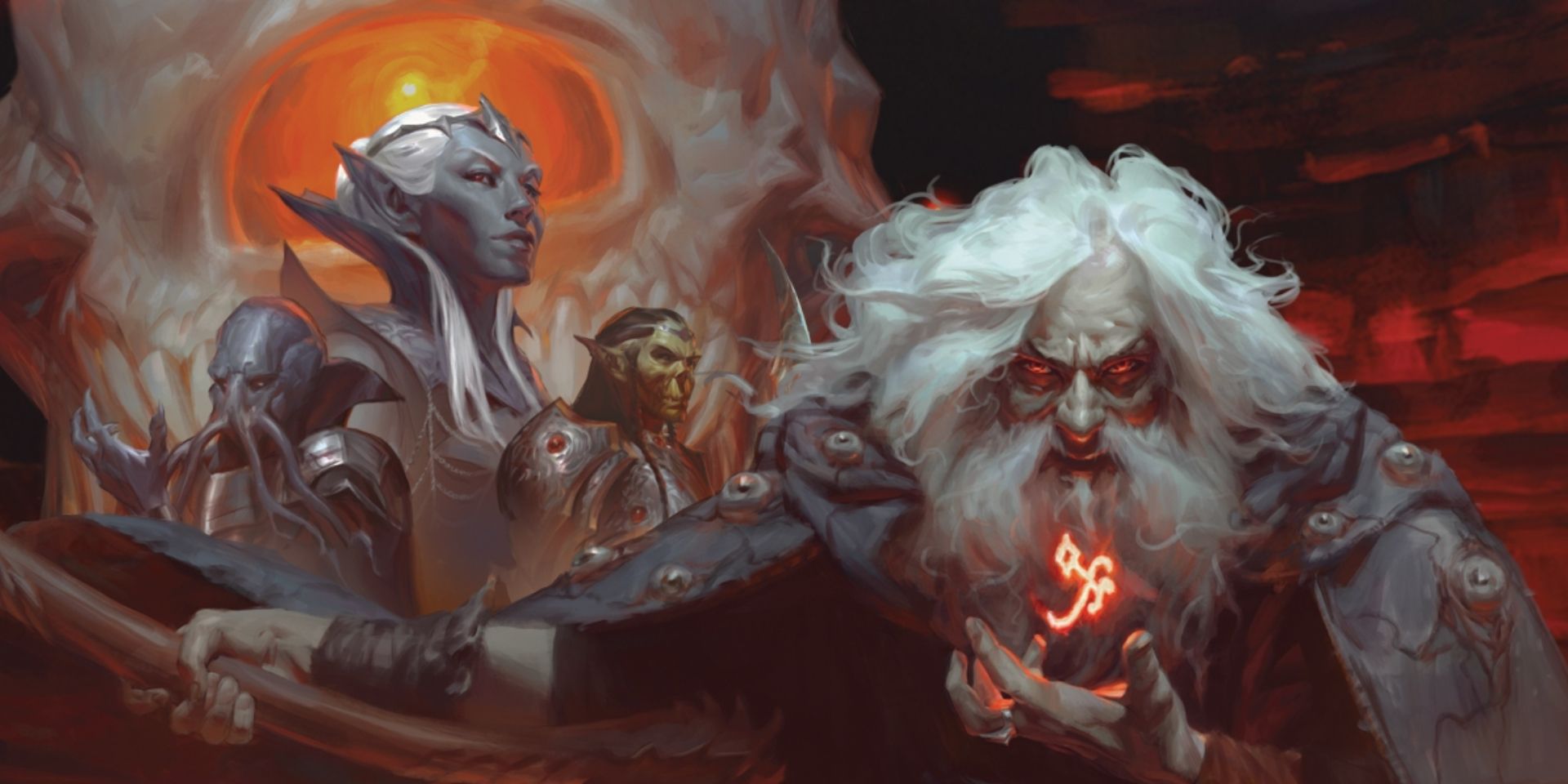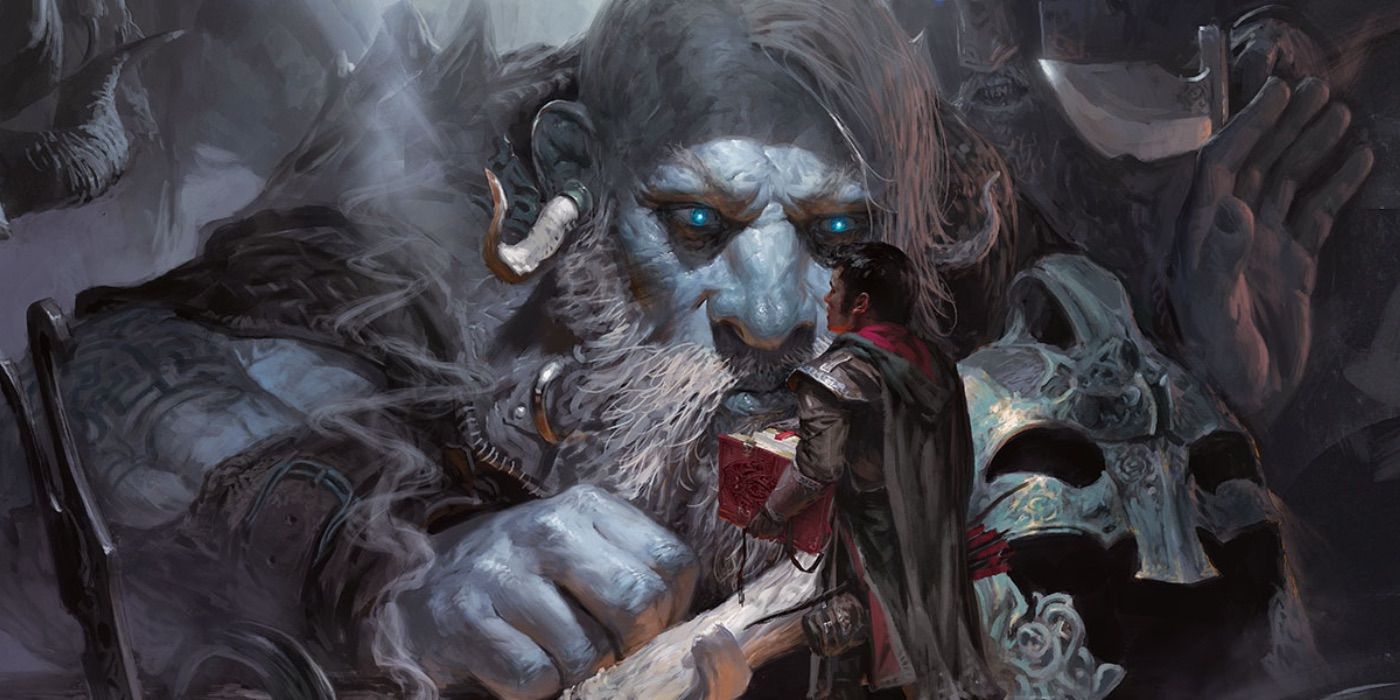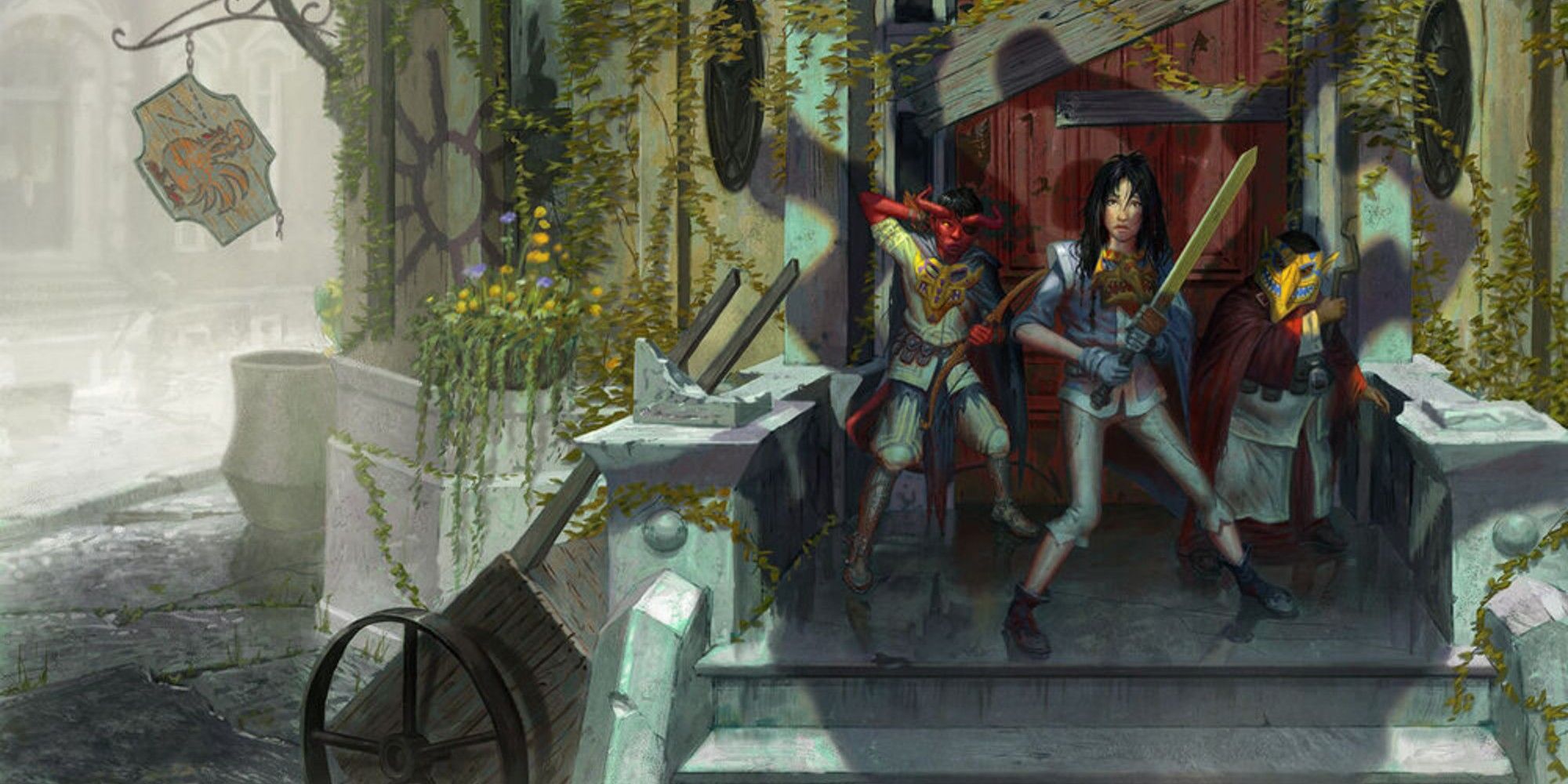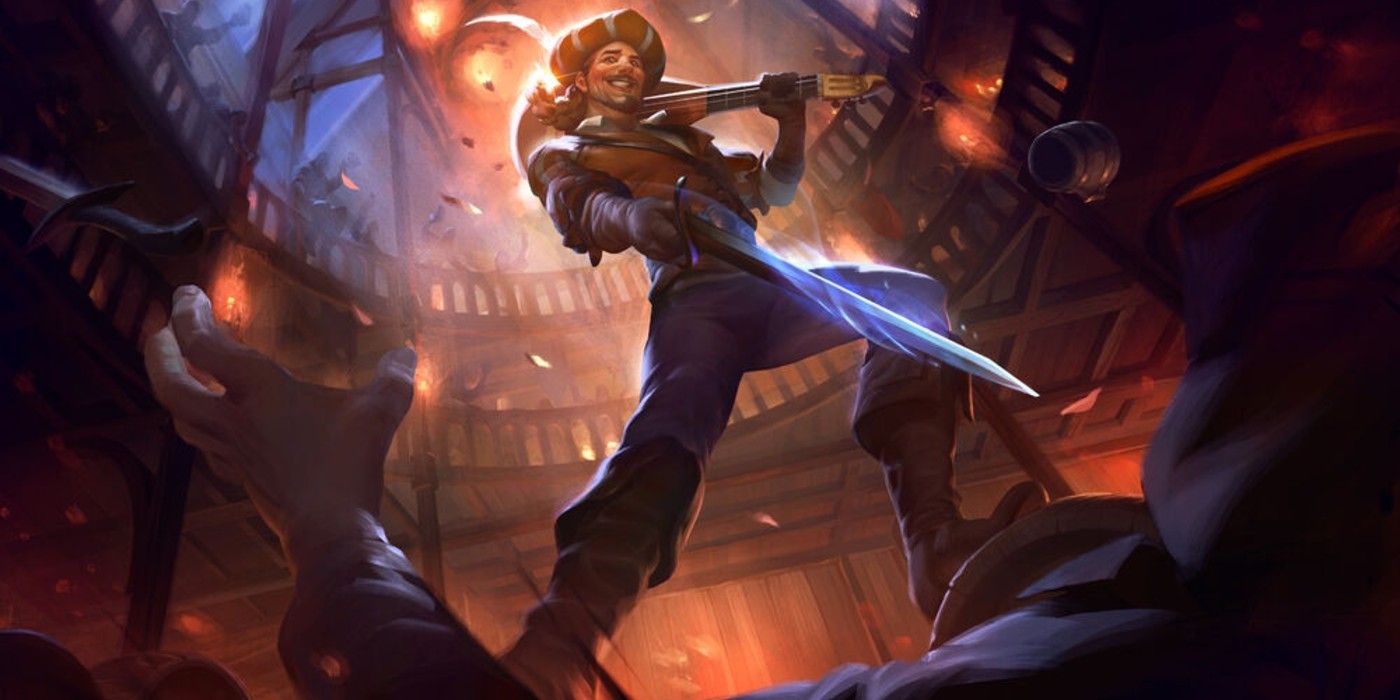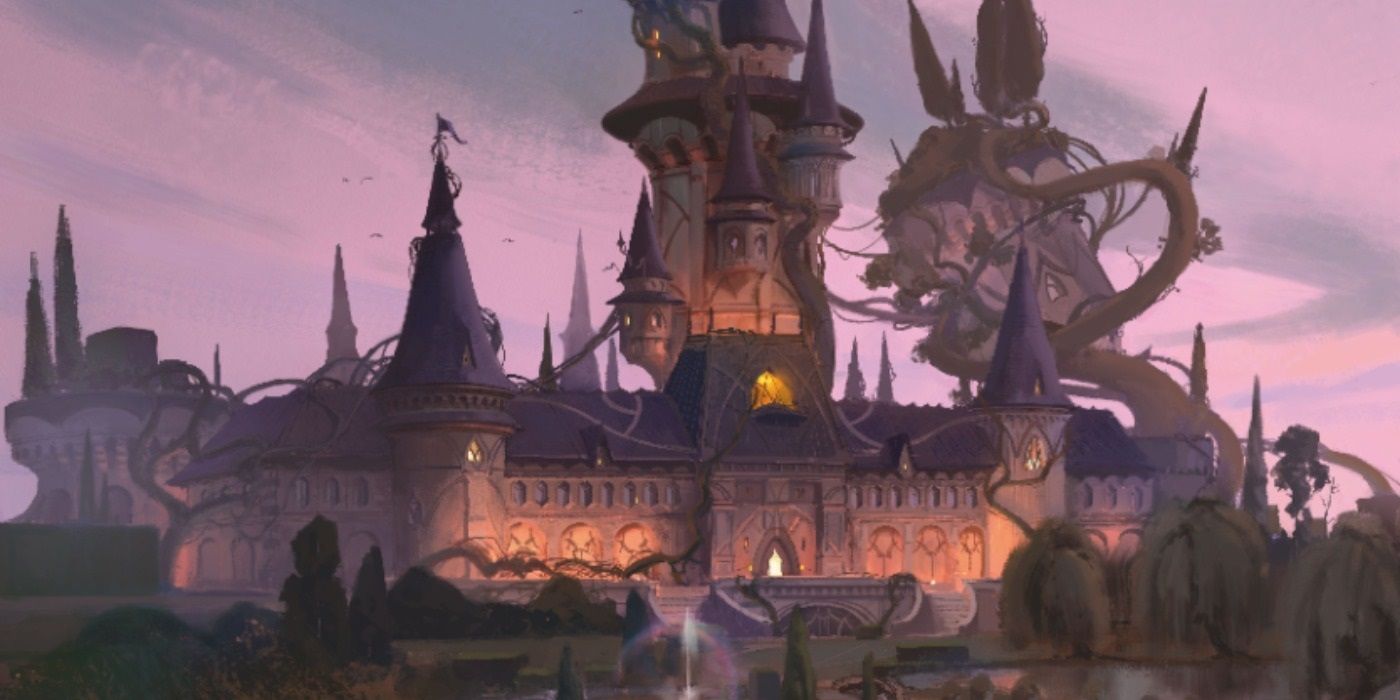In Dungeons & Dragons and other similar fantasy RPGs, the default assumption is that players portray legendary heroes who start out protecting villages from goblins and end their story by saving the world. It's just as possible, however, for RPGs like D&D to tell the stories of ambitious despots, sinister cultists, calculating criminals, and cruel reavers who want to set the world on fire and rule the ashes. Dungeon Masters and gamers who want to enjoy running a "villain" RPG campaign should always focus their game sessions with consistent principles of communication and consent, making absolutely sure no single player is using their "villainous" characters as an excuse to be a jerk.
In a strange way, the combat and exploration-focused mechanics of Dungeons & Dragons do encourage players to adopt a pragmatic, almost-but-not-quite-villainous mindset for their player characters. The archetypical adventuring party of D&D, inspired by roguish fantasy protagonists such as Conan the Barbarian or Fafhrd and the Gray Mouser, is less a band of virtuous champions and more a wandering pack of mercenaries, hired by desperate strangers to solve their problems with violence, magic, and a bit of smooth talk. As they role-play characters of great physical/mental prowess, with the fictional nature of the game insulating them from consequences, players of D&D and other RPGs can easily slip into a "Murder Hobo" mindset where they treat Non-Player Characters as expendable assets and resort to mass murder at the top of a hat.
Deliberately choosing to run a serious villain campaign in D&D (rather than slipping into one through "Murder Hobo" antics taken to the extreme) can be a sobering and philosophical process that explores humanity's ability to be cruel to themselves and the world around them. It can also be a chance to indulge in entertaining shenanigans worthy of a comic book, giving players, through their characters, the chance to strap on a pair of spiked leather shoulder-pads and indulge in the aesthetics of "Evil." In both cases, players and Dungeon Masters should plan and execute their "evil" narrative with great care and adherence to certain standards, lest their campaign go in uncomfortable, unenjoyable directions.
Establish What Villain D&D Players Are & Aren't Comfortable With
Some villains, be they real or fictional, commit easily "sanitized" acts of evil: murder, kidnapping, theft, deception, usurping political power, betrayal, manipulation, extortion, and so on. Then there are villains whose actions are vile on both an intellectual and visceral level; genocide, psychological abuse, sexual violence, torture, etc. Villainous deeds in the former category are generally palatable to most participants in a roleplaying game; villainous deeds in the latter category are very often upsetting, unenjoyable, or potentially even traumatic for RPG players.
For this reason, a Game Master running a campaign where participants are free to do awful things should always have a forthright talk with their players they've recruited, confirming their interest in roleplaying "bad guys," warning them about any potentially "triggering" content ahead of time, and giving them the chance to veto themes or events they just wouldn't be comfortable with. RPG safety tools like the "X-Card" or "Lines And Veils" are a good way to solicit feedback from the players of a villain campaign and make sure everyone's having a good time being "bad."
Decide How Serious Or Hilarious D&D Villain PCs Should Be
There are villainous campaigns that put players in the shoes of tyrants and monsters - cruel, cunning individuals like Strahd from Castle Ravenloft who will crush innocents under their heels in order to realize their twisted ambitions. Other villainous campaigns can feature more comical adversaries of righteousness - "Team Rocket"-style minions who try to steal something and get defeated through slapstick, or flawed protagonists straight from a Coen Brothers movie whose attempts to pull off the "Perfect Crime" go horribly wrong.
Related: How To Play Non-Violent Tabletop RPG Campaigns
There are even villainous campaigns like Dimension 20's "Escape From The Blood Keep," whose PCs are tyrants and monsters in the service of a Dark Lord AND a group of buffoons at the same time. By properly calibrating the tone of their villainous D&D campaign to match the mood of their players, a DM/GM can make sure everyone at their gaming table is enjoying themselves.
Get D&D Players To Create And Execute Villainous Plans
The heroes of a fantasy RPG campaign can react to villains (stopping a dragon from extorting a village) or be proactive against villains (starting a revolutionary movement to overthrow an evil Duke). Villainous PCs, in contrast, are generally more interesting if they're constantly taking the initiative with evil "plans" and "Machiavellian schemes."
When putting together a villain-focused Dungeons & Dragons campaign, players having trouble creating motivations and goals for their villainous PCs can always use the D&D Moral Alignment system to narrow down their options. If they're interested in playing a Lawful Evil PC, for instance, it would make sense for their characters to have goals related to building or strengthening a cruel social order; an oppressive empire, an exploitive joint-stock company, a crime syndicate with their fingers in every corner of society, and so on.
Players with Chaotic Evil PCs, in contrast, may have more fun pursuing in-game goals related to destruction or upheaval; running an apocalypse cult, pillaging villages and trade caravans with bands of reavers, etc. Ideally, the villainous adventuring party should also have a single shared "evil plan," a long-term scheme with a reward tantalizing enough to unite Evil PCs of various alignments together into the same cause.
Create A World Villainous PCs Can Change Or Overturn
If Evil PCs should always be plotting to reshape the world, it logically follows that the Dungeon Master/Game Master of a villainous D&D campaign should choose or create a setting players can change in interesting ways. In a Dungeons & Dragons fantasy setting, for instance, every mountain, tomb, or ancient ruin should have a forgotten relic or arcane secret capable of granting Evil PCs useful forms of power and influence. Every political or religious institution, be it fantasy kingdom or adventuring guild, should have a weakness of some kind, flaws villainous PCs can patiently pry at in order to destroy, exploit, or co-opt them.
The Evil protagonists of this villainous Dungeons & Dragons campaign should also have enemies who hinder their schemes – both heroic champions of righteousness and other villains with reasons to oppose the Evil PCs. The DM/GM can even indulge in poetic irony and challenge their villainous PCs with NPCs modeled after the classic heroic RPG adventuring party, while still giving players a fair chance to defeat the forces of good and secure the triumph of "Evil."

